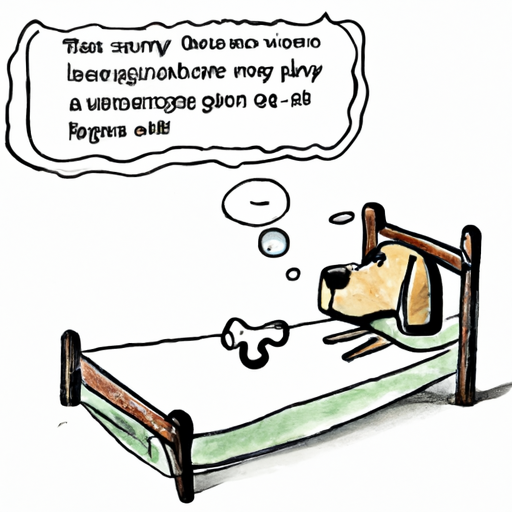As a caregiver, you know that every creature under your care, be it a human or a pet, has its own emotional needs. Dogs, in particular, are known for their emotional depth. They are not just bundles of joy, but sentient beings capable of experiencing a vast spectrum of emotions. In this article, we explore the question, “What do dogs think about when they are alone?”
Understanding Your Dog’s Mind
The first step to understanding what your dog thinks about when they’re alone is understanding how their mind works. They don’t think in words or complex sentences like humans do. Their thought processes are more associated with images, smells, and feelings. They perceive the world around them mainly through their senses. For instance, when you leave the house, your dog might associate the image of you walking towards the door, the sound of the door closing, and the absence of your smell with being alone.
Exploring Their Emotional Landscape
Dogs are capable of experiencing a range of emotions. When they are alone, they might feel:
- Anxiety or fear
- Boredom
- Relaxation or peace
- Anticipation or excitement for your return
It’s important to note that every dog is different. Some dogs might enjoy having some alone time, while others might feel distressed. The key to understanding your dog’s emotional experience is observing their behaviors.
Signs of Distress
Dogs exhibit certain behaviors when they’re distressed. If your dog does any of the following when they’re alone, they might be experiencing separation anxiety:
- Destructive behavior, like chewing on furniture or scratching at doors
- Excessive barking or howling
- Accidents in the house, even though they’re house trained
If you notice any of these signs, it’s crucial to consult a veterinarian or a pet behaviorist.
Creating a Comfortable Alone Time for Your Dog
Creating a comforting environment for your dog when they’re alone can alleviate their distress. Here are some strategies you might consider:
| Strategies | Description |
|---|---|
| Mental Stimulation | Leave toys or puzzles that can keep them mentally engaged. |
| Physical Exercise | Ensure they get plenty of exercise before you leave. A tired dog is more likely to rest when alone. |
| Familiar Scents | Leave something with your scent, like an old t-shirt, to comfort them. |
| Training | Train them to understand that you will always return. Start with short departures and gradually increase your time away. |
Frequently Asked Questions
Q: Does my dog know when I’ll come back?
A: Dogs have an incredible sense of time. They might not understand the concept of hours and minutes, but they can predict routines and patterns.
Q: Can dogs get depressed when they’re alone?
A: Yes, just like humans, dogs can also experience depression. If you notice any drastic changes in their behavior, it’s best to consult a veterinarian.
Q: How long is too long to leave a dog alone?
A: It depends on the dog’s age and health. Generally, adult dogs shouldn’t be left alone for more than 6-8 hours.
Remember, as a caregiver, your job is to ensure that all your charges, including your furry friends, feel loved and secure. Understanding what dogs think about when they are alone will help you provide the best care possible.



